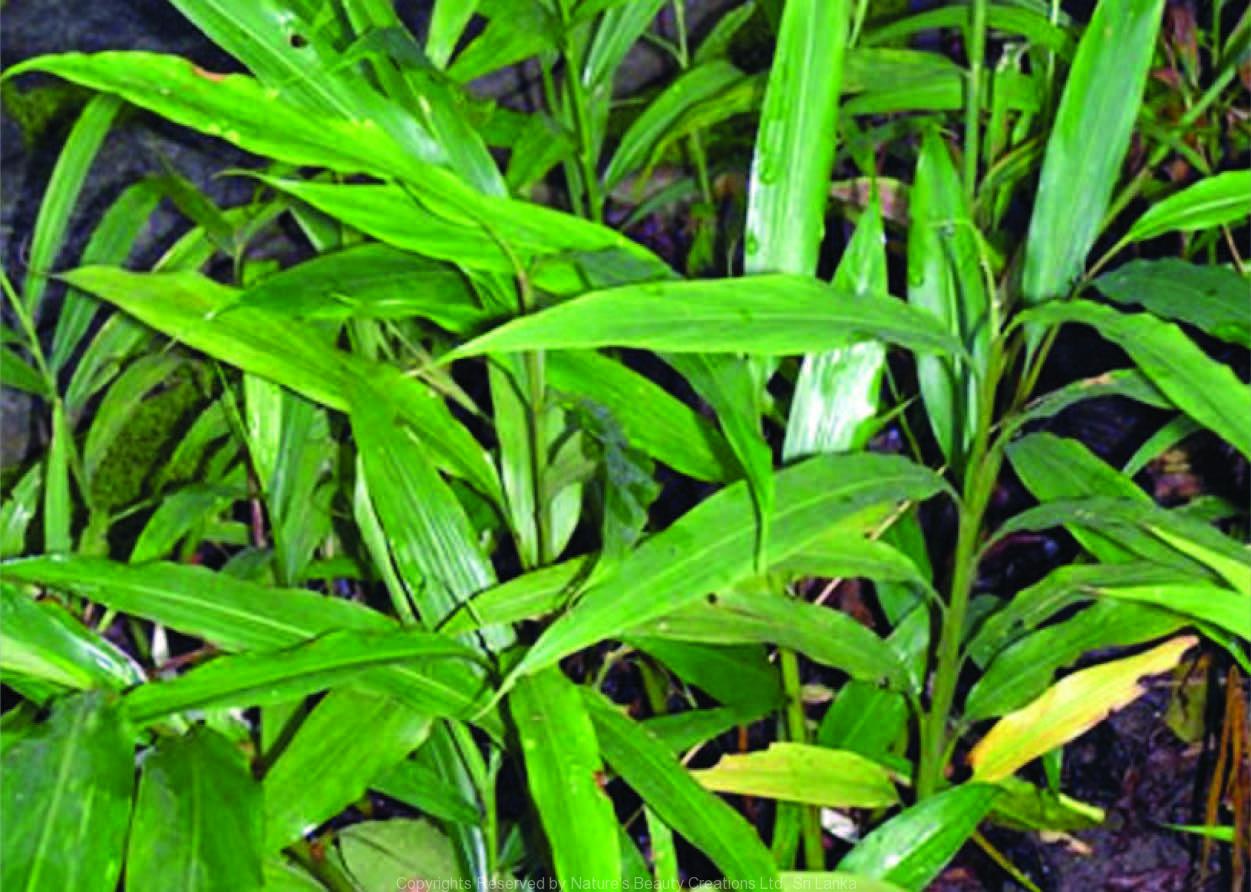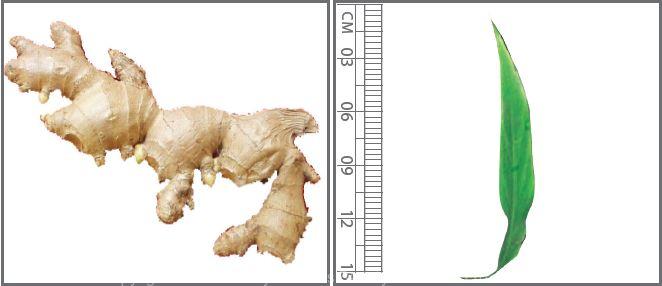

Traditional Knowledge
Useful plant parts :
Rhizome
Uses in traditional medicine :
- Fresh rhizome in sour orange juice is taken for abdominal pain
- Used to treat cold, fever, cough and asthma
- Diuretic for general dropsy
Scientific Research
Chemical constituents:
Terpenes: geranial, α-zingiberine, ar-borneol, curcumene, phenylpropenes: eugenol, zingerone, decanal from rhizome essential oil and oleoresins; phenolic compounds: gingerol derivatives, shogaol derivatives, gingerdione derivatives and 6-paradol from roots
Bioactivity :
Rhizome extracts, essential oil and oleoresins: antioxidative, antibacterial, antifungal, anticancer, immunomodulatory, antitumour, anti-inflammatory, antiapoptotic, antihyperglycaemic, hypolipidaemic, antiemetic, improves diabetic dyslipidaemia, ameliorates cisplatin-induced nephrotoxicity, radioprotective and neuromodulatory properties; drink prepared from roots: useful for diabetic patients who suffer from sexual impotency
Clinical:
An effective and promising prophylactic antiemetic that can be usefull for surgery
Note :
Rhizome is used as a food flavouring agent
References : Ali, B. H. et al., (2008), Some phytochemical, pharmacological and toxicological properties of ginger (Zingiber officinale Roscoe): A review of recent research, Food and Chemical Toxicology, 46, 409–420. Ajith, T. A. et al., (2007), Zingiber officinale Roscoe alone and in combination with α-tocopherol protect the kidney against cisplatin- induced acute renal failure, Food and Chemical Toxicology, 45, 921–927. Bhandar, U. et al., (2005), Effect of ethanolic extract of Zingiber officinale on dyslipidaemia in diabetic rats, Journal of Ethnopharmacol- ogy, 97, 227–230. Cheng, X. L. et al., (2011), Steamed ginger (Zingiber officinale): Changed chemical profile and increased anticancer potential, Food Chemistry, 129, 1785–1792. Lee, S. W. et al., (2011), Phenolic compounds isolated from Zingiber officinale roots inhibit cell adhesion, Food Chemistry, 128, 778–782. Haksar, A. et al., (2006), Zingiber officinale exhibits behavioral radioprotection againstradiation-induced CTA in a gender-specific manner, Pharmacology, Biochemistry and Behavior, 84, 179–188. Phillips, S. et al., (1993), Zingiber officinale (Ginger)–an antiemetic for day case surgery, Anaesthesia, 48(8), 715–717. Phillips, S. et al., (1993), Zingiber officinale does not affect gastric emptying rate, Anaesthesia, 48(5), 393–395. Singh, G. et al., (2008), Chemistry, antioxidant and antimicrobial investigations on essential oil and oleoresins of Zingiber officinale, Food and Chemical Toxicology, 46, 3295–3302. Sivasothy, Y. et al., (2011), Essential oils of Zingiber officinale var. rubrum Theilade and their antibacterial activities, Food Chemistry, 124, 514–517. Shalaby, M. A. and Hamowieh, A. R., (2010), Safety and efficacy of Zingiber officinale roots on fertility of male diabetic rats, Food and Chemical Toxicology, 48, 2920–2924. Stoilova, I. et al., (2007), Antioxidant activity of a ginger extract (Zingiber officinale), Food Chemistry, 102, 764–770.
Copyrights Reserved By
Natures Beauty Creations




